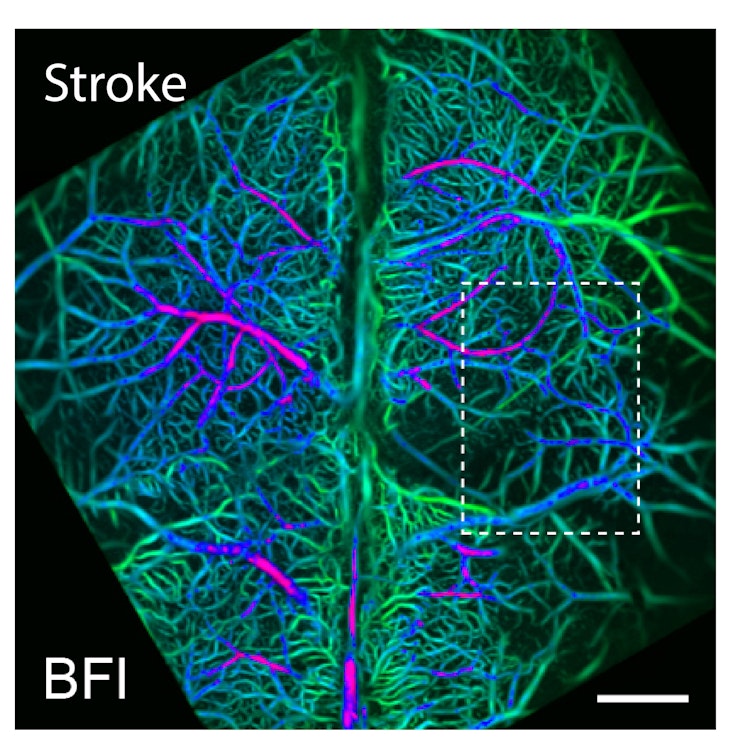
Transcranial Cortex-Wide Imaging of Murine Ischemic Perfusion With Large-Field Multifocal Illumination Microscopy
BACKGROUND: Ischemic stroke is a common cause of death worldwide and a main cause of morbidity. Presently, laser speckle contrast imaging, x-ray computed tomography, and magnetic resonance imaging are the mainstay for stroke diagnosis and therapeutic monitoring in preclinical studies. These modalities are often limited in terms of their ability to map brain perfusion with sufficient spatial and temporal resolution, thus calling for development of new brain perfusion techniques featuring rapid imaging speed, cost-effectiveness, and ease of use. METHODS: We report on a new preclinical high-resolution angiography technique for murine ischemic stroke imaging based on large-field high-speed multifocal illumination fluorescence microscopy. We subsequently showcase the proposed method by monitoring therapeutic effects of thrombolysis in stroke (n=6), further performing cross-strain comparison of perfusion dynamics (n=6) and monitoring the therapeutic effects of sensory stimulation–based treatment (n=11). RESULTS: Quantitative readings of hemodynamic and structural changes in cerebral vascular network and pial vessels were attained with 14.4-μm spatial resolution at 80-Hz frame rate fully transcranially. The in vivo perfusion maps accurately delineated the ischemic core and penumbra, further exhibiting a strong correlation (86.1±4.5%) with ex vivo triphenyl tetrazolium chloride staining, significantly higher than for the conventional laser speckle contrast imaging method. Monitoring of therapeutic effects of thrombolysis confirmed that early recanalization could effectively save the penumbra while reducing the infarct area. Cross-strain comparison of perfusion dynamics affirmed that C57BL/6 mice feature a larger penumbra and smaller infarct core as compared with BALB/c mice, which have few or no collaterals. Sensory stimulation–based treatment could effectively enhance blood flow and abolish perfusion deficits in the ischemic core and penumbra regions. CONCLUSIONS: A high-speed fluorescence-based angiography method for transcranial stroke imaging in mice is introduced, which is capable of localizing brain perfusion changes and accurately assessing the ischemic penumbra. Compared with the whole-brain x-ray computed tomography and magnetic resonance imaging methods, which are conventionally used for stroke diagnosis and therapeutic monitoring, the new approach is simple and cost-effective, further offering high resolution and speed for in vivo studies. It thus opens new venues for brain perfusion research under various disease conditions such as stroke, neurodegeneration, or epileptic seizures.
Download
chen-2025.pdfResearchers







